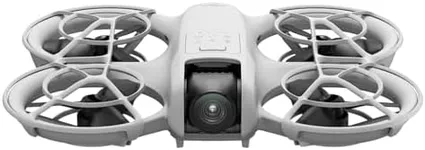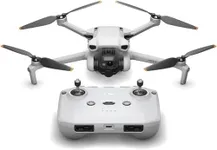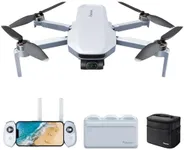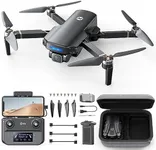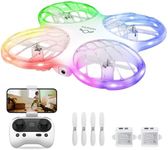Buying Guide for the Best Drones For Real Estate
When choosing a drone for real estate, it's important to focus on features that will help you capture high-quality images and videos of properties. The right drone can make your listings stand out by providing stunning aerial views and smooth footage. To find the best fit, think about the type of properties you'll be shooting, the environments you'll be working in, and your own experience level with drones. Understanding the key specifications will help you make a smart choice that matches your needs.Camera QualityCamera quality is crucial because it determines how sharp and detailed your photos and videos will be. This is usually measured in megapixels for photos and resolution (like 1080p or 4K) for videos. Lower-end drones may offer basic HD (1080p) video and 12MP photos, which can be enough for simple listings. Mid-range options often provide 2.7K or 4K video and 20MP photos, giving you much clearer and more professional results. High-end drones can go even higher, but for most real estate needs, 4K video and 20MP photos are more than sufficient. Choose based on how polished you want your listings to look and whether you plan to crop or edit your images.
Flight TimeFlight time tells you how long the drone can stay in the air on a single battery charge. This is important because longer flight times mean you can shoot more footage without having to land and swap batteries. Entry-level drones might last 15-20 minutes, while more advanced models can fly for 25-35 minutes or more. If you plan to shoot large properties or want to take your time getting the perfect shot, look for drones with longer flight times. For smaller properties or quick shoots, shorter flight times may be enough.
StabilizationStabilization refers to how well the drone keeps the camera steady during flight, which is essential for smooth, professional-looking videos and sharp photos. Most drones use a gimbal system, which can be 2-axis or 3-axis. A 3-axis gimbal provides the best stabilization, reducing shake and vibration from all directions. If you want cinematic, smooth footage, especially in windy conditions, prioritize drones with a 3-axis gimbal. For basic needs or still photos, a 2-axis gimbal might suffice, but the results may not be as polished.
RangeRange is the maximum distance the drone can fly from the controller while maintaining a reliable connection. For real estate, you usually don't need extreme range, but it's helpful if you want to capture large estates or properties with lots of land. Basic drones may have a range of a few hundred meters, while more advanced ones can go several kilometers. Choose a range that matches the size of the properties you'll be filming and the environments you'll be working in, keeping in mind that obstacles like trees and buildings can reduce effective range.
Ease of UseEase of use covers how simple the drone is to operate, including features like automatic takeoff and landing, obstacle avoidance, and intelligent flight modes (like orbit or follow-me). If you're new to drones, look for models with beginner-friendly controls and safety features. More experienced users might want advanced flight modes for creative shots. Think about your comfort level and how much time you want to spend learning to fly versus focusing on capturing great footage.
PortabilityPortability refers to how easy it is to transport the drone, which can be important if you travel between multiple properties. Some drones are foldable and lightweight, making them easy to carry in a backpack, while others are bulkier and require a dedicated case. If you need to move around a lot or want to keep your gear light, look for a compact, foldable drone. If you mostly shoot in one location, portability may be less of a concern.
